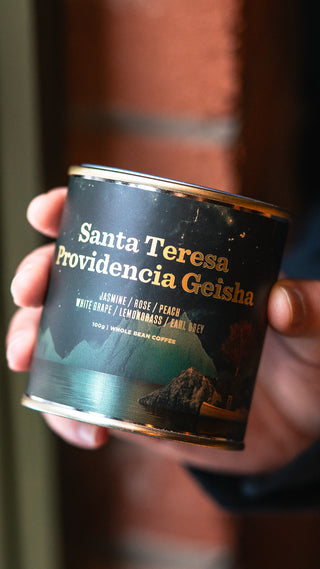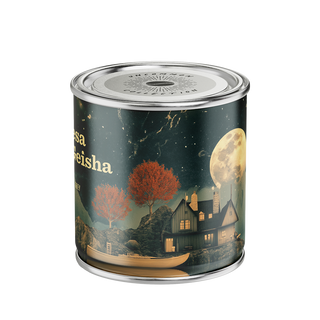- Filter
Santa Teresa Providencia Geisha
JASMINE | ROSE | PEACH | WHITE GRAPE | LEMONGRASS | EARL GREY
Santa Teresa Geisha was Sebastian’s favourite Costa Rican coffee of 2024, and it was also the Cup of Excellence #1 coffee this year. The coffee is a classic Geisha, it leads with the florals, followed by sweet peach and bergamot finish. It’s the best washed Geisha we’ve ever tasted from Costa Rica.
Adding product to your cart
Watch
A Cup of Excellence




THE NEXT GENERATION REACHING NEW QUALITY LEVELS
Roger Ureña started Santa Teresa, but his son Alex is now the head honcho. Alex is pushing. He can sample roast, cup and evaluate his own coffee. He regularly conducts varietal and processing experiments to help to continually improve his quality and expand the profile of coffees he offers.
Roger is a third-generation coffee farmer in the remote area of Santa María de Dota in Costa Rica. Although Roger has been a farmer for most of his life, he didn’t start milling his own coffee until 2014, when he established his micro-mill which he named “Santa Teresa 2000”. Roger is one of many quality-focused farmers from Tarrazú who took the plunge by investing in milling equipment and setting up their own micro-mill. His growing conditions justify it; he has the amazing growing properties of Tarrazú but is also blessed with some of the highest elevation farms in the country. In 2020, Roger brought in his son Alex to manage the day to day of the mill and Alex has brought an element of discipline and experimentation that has allowed Santa Teresa to reach new levels.
The Tarrazú region of Costa Rica is literally bursting at the seams with coffee and producers. After two near-record harvests in the past four years, it now represents over 35% of the exportable coffee from Costa Rica. Tarrazú has the soil, elevation, and climate to produce good quantities or great quality coffee. Over the past decade, the surge in new farms and micro-mills is staggering. Until recently, most producers in the region sold coffee to the three major cooperatives, who then went on to blend the coffee of all qualities into a single regional blend.
Although the cooperatives still account for most of the volume from Tarrazú, the micro-mills are continuing to eat into their share. The quality improvement with the birth of micro-mills is palpable and has re-inserted Costa Rican coffee as a producing nation of top-notch quality. Still, there is plenty of room for improvement, especially when it comes to varietal diversity. Caturra and Catuaí account for over 96% of the coffee in Tarrazú, and while these varieties produce great results in some terroirs, others would benefit from a different varietal.
This is exactly what Roger has done with his farms. Most of his twelve hectares have red Catuaí, which produce nice results. However, he also has Geisha, SL-28, Ethiopian Heirlooms, Casiopea, Sudan Rume, Villalobos, Bourbon, Pacamara and Typica planted in his farms. This diversity allows him to learn which varieties work better in specific areas, both for productivity and cup quality.
– Sebastian


